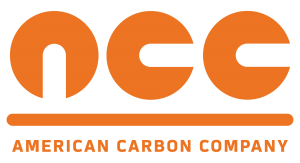In recent history there have been two primary methods for producing raw magnesium. The first is extraction from saltwater (via electrolysis using the Dow Process). This process was nearly the exclusive source of magnesium until about 2005. Although this process produces a generally more “electrochemically pure” magnesium, it is not currently cost effective when compared to the production method used in China and other parts of the world. According to a current USGS Study, China currently provides over 85% of the world’s magnesium demand.
The process that is used in China to extract the magnesium from the oxide is called the Pidgeon Process. This process starts with mined dolemite.
The dolemite is heated to nearly 1200 degrees in a large rotational furnace. The heating process bakes off much of the gasses and impurities held in the dolemite. From there the dolemite is crushed and mixed with fluoride and crushed ferrosilicon. The resultant powder is formed into charcoal sized briskets which are placed in another furnace where it is heated and the resultant gas is harvested. This gas crystallizes into pure magnesium. The final step is alloying the magnesium to create a magnesium ingot suitable to castings, or many other uses. Since this production method does not produce the most ideal magnesium for anode production, American Carbon only selects the most qualified ingot for production of anodes.
One of American Carbon biggest challenges is educating customers as to the strengths and weaknesses of the Pidgeon Process versus the Dow Process. Producing magnesium via the Dow Process produces magnesium that very easily meets the electrochemical requirements of the ASTM G97 standard for magnesium anodes. The chemical composition of the ASTM B843 alloy however, was always a challenge. This means that for the first 30 years that magnesium anodes were used in cathodic protection, all specifications put the emphasis on the chemical composition. When global magnesium production started switching to the Pidgeon Process in the early 2000s, the specifications all still focused on the chemical composition as well. However the industry quickly found that magnesium anodes were not living up to their expected life. Further analysis found that the electrochemical properties of the magnesium produced by the general Pidgeon Process was not a suitable for anodes. Now a number of anode manufacturers have developed proprietary methods to ensure the electrochemical property is suitable for anodes, but many do not. This leads to inferior being readily available on the market. As the G97 test for electrochemical performance is much more complex and expensive, many users forego this test. American Carbon recommends a minimum one anode from each order be tested to ensure compliance with the project specifications for electrochemical efficiency.
Using a number of proprietary techniques and processes, American Carbon is consistently one of the top producers of magnesium anodes in the world.
